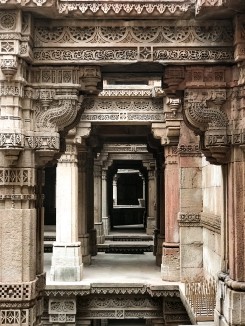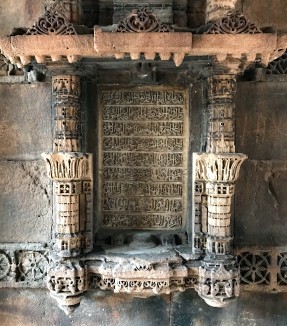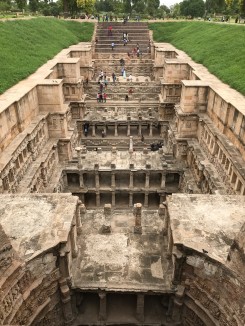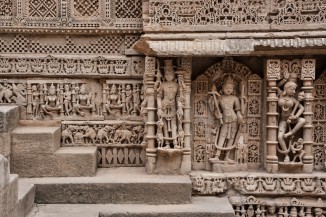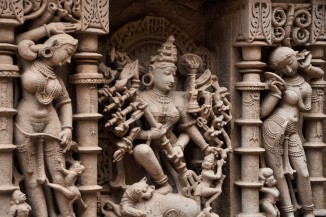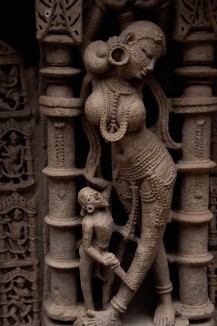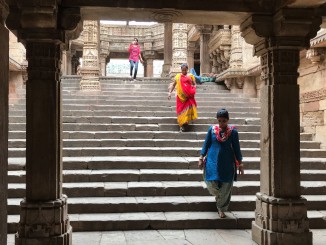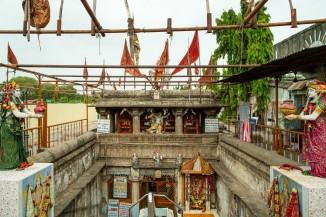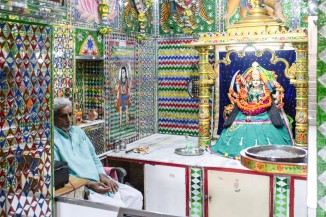Gender & Patronage
A photograph taken in 1872 by Colin Murray of women fetching water at the Rudabai Vaav near Adalaj on the outskirts of Ahmedabad. Image source: Colin Murray. Adalaj - The Public Well or Wav. British Library Online Gallery: Asia, Pacific and Africa Collections, March 26, 2009.
Women tourists at Rudabai vaav in 2018.
Adjacent to the village of Adalaj, Rudabai vaav was built under the patronage of a noblewoman named Rudabai in 1499. An inscription in the stepwell states that the patroness funded, from her personal treasury, the well’s ornate and intricately carved structure.
A late 15th century Arabic donation inscription in the Bai Harir vaav in Asarwa, Ahmedabad. The stepwell was commissioned by Bai Harir, the female superintendent of the Sultan's harem.
The most elaborate and the largest known stepwell of the region, now called the Queen's Stepwell, was commissioned in the 11th century by Rani Udayamati, queen of the Solanki dynasty in Patan.
The structural elements of the Queen's Stepwell, including beams, capitals, column shafts, and pedestals, are decorated with vegetal and figural motifs.
Figural stone sculptures embedded in wall panels at the Queen's Stepwell in Patan.
A panel detail from the Queen's Stepwell with sculptures depicting the mighty goddess Durga slaying a demon in the middle, flanked by two maidens clothing and adorning themselves with jewelry.
A sculpture depicting a female mendicant at the Queen's Stepwell.
A sculpture depicting a maiden with a dwarf admiring her beauty at the Queen's Stepwell.
Young girls enjoying themselves at Rudabai vaav on a school excursion.
Women descending the stepped corridor at Rudabai vaav.
Maata Bhavani vaav in Asarwa, Ahmedabad has been transformed into a temple enshrining a goddess. Female figures, recently cast in plaster and painted, have been placed on pedestals flanking the stepwell’s entrance.
A detail of the female figure holding up a pot at the Maata Bhavani vaav. The pedestal, which is covered with wall tiles depicting an incarnation of the goddess, reflects present day sensibilities.
A priest sits next to an idol of a goddess in Ambe maata vaav near Malav talav in Ahmedabad. The stepwell has been converted into a temple with a central shrine covered in mirrorwork.
Idols depicting various incarnations of a goddess in a shrine at the Khodiyar maata vaav, a stepwell in Bapunagar which has also been transformed into a temple.



